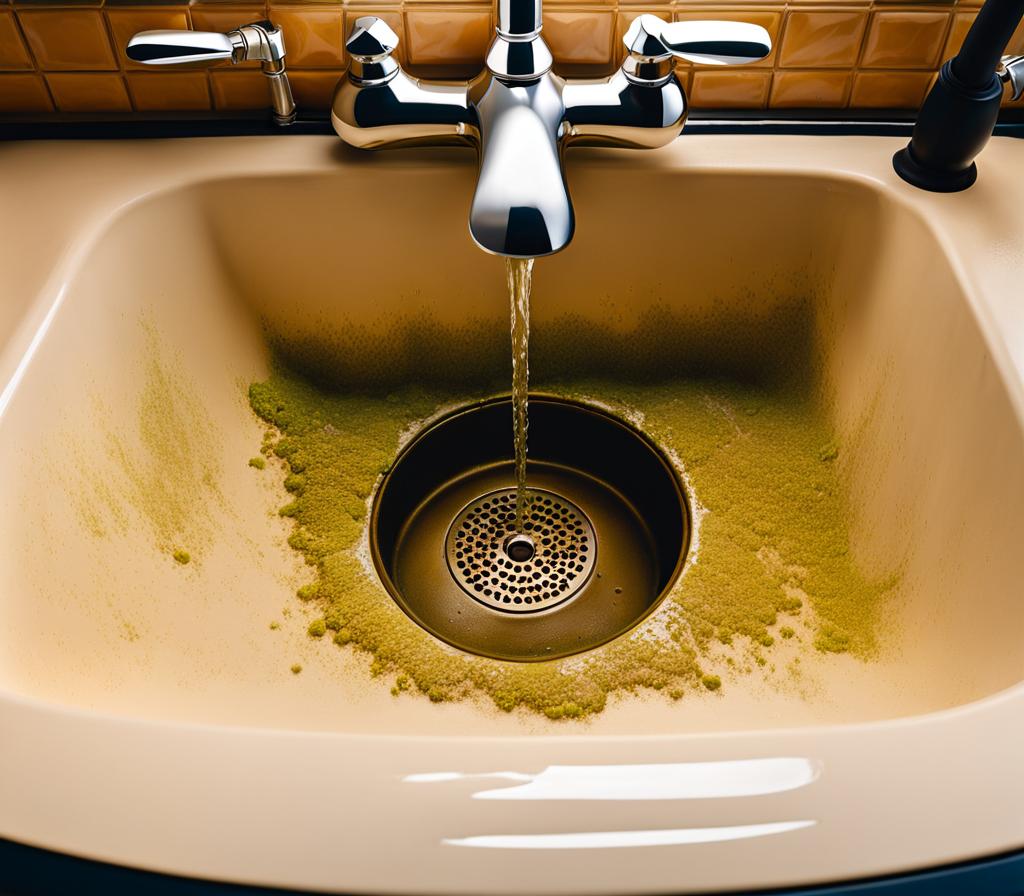Dealing with mold in the sink drain can be a frustrating and unsightly issue. While it may seem like a minor nuisance, ignoring this problem can lead to serious health risks and expensive plumbing repairs. Fortunately, with the right approach, you can banish mold in sink drains naturally, leaving your kitchen or bathroom sparkling clean and fresh.
As someone who has personally tackled this challenge, I understand the desire to find an effective yet eco-friendly solution. Worry not, for I’m here to share my tried-and-true methods that have proven victorious in the battle against mold without resorting to harsh chemicals.
Common Causes of Mold in Sink Drain
Before we delve into the natural remedies, let’s explore the root causes of mold growth in sink drains. Mold thrives in damp and dark environments, making drains the perfect breeding ground. Hair, food particles, and soap scum accumulate over time, creating a moist and nutrient-rich environment that fuels mold growth. Additionally, stagnant water or slow drains exacerbate the problem, providing the ideal conditions for mold to flourish.
Understanding these factors is crucial in preventing future mold infestations. By addressing the underlying causes, you can maintain a clean and mold-free sink drain while ensuring the longevity of your plumbing system.
Risks Associated with Mold Buildup in Drains
While mold may initially seem like a mere cosmetic issue, its presence can pose significant health risks. Mold spores, when inhaled or ingested, can trigger allergic reactions, respiratory problems, and even exacerbate conditions like asthma. Moreover, certain types of mold can produce toxic substances known as mycotoxins, which can lead to severe health complications if left unchecked.
Beyond the health concerns, mold growth can also cause structural damage to your plumbing system. As the mold spreads, it can corrode pipes and fixtures, potentially leading to costly repairs or replacements down the line. Addressing mold issues promptly is not only crucial for your well-being but also for safeguarding the integrity of your home’s plumbing infrastructure.
Natural Solutions for Mold Removal from Sink Drains
Now that we understand the importance of tackling mold in sink drains, let’s explore some effective and natural solutions. These eco-friendly remedies not only eliminate mold but also leave your sink drain fresh and inviting.

Baking Soda and Vinegar
The dynamic duo of baking soda and vinegar is a powerful ally in the fight against mold. Begin by pouring baking soda down the drain, followed by vinegar. Allow the mixture to fizz and work its magic for a few minutes. The baking soda acts as a gentle abrasive, while the vinegar’s acidity helps break down the mold and its roots. After letting it sit, flush the drain with hot water to rinse away the loosened mold and debris.
This method is not only effective but also incredibly economical, making it a go-to solution for budget-conscious homeowners.
Here’s a step-by-step guide to using baking soda and vinegar:
- Pour 1/2 cup of baking soda directly into the sink drain.
- Follow with 1 cup of white vinegar, allowing the mixture to fizz and react.
- Let it sit for 15-20 minutes to allow the acidity to work its magic.
- Flush the drain with boiling hot water to dislodge the mold and debris.
- For stubborn cases, repeat the process until the mold is completely eliminated.
Preventative Measures to Keep Drains Mold-Free
While natural remedies are effective in banishing existing mold, prevention is key to maintaining a mold-free sink drain. Implementing a few simple habits can go a long way in deterring mold growth and keeping your drains fresh and clear.
First and foremost, make it a habit to clear hair and food debris from the drain regularly. These organic materials provide a nutrient-rich environment for mold to thrive, so removing them promptly can significantly reduce the risk of mold infestations.
Secondly, consider incorporating a weekly drain cleaning routine. You can use a combination of baking soda, vinegar, and boiling water to flush out any buildup and maintain a clean, flowing drain. This proactive approach not only prevents mold but also ensures optimal drainage, avoiding potential clogs and backups.
Additionally, ensure proper ventilation in your kitchen or bathroom. Mold loves damp, stagnant environments, so keeping the area well-ventilated can discourage its growth. Use exhaust fans or open windows during and after showering or cooking to promote air circulation and reduce moisture levels.
While natural remedies can be highly effective, there may be instances where professional drain cleaning services are necessary. If you’ve tried multiple DIY methods without success or notice persistent clogs or foul odors, it’s time to seek professional assistance.
Experienced plumbers have access to specialized tools and techniques that can thoroughly clean and clear even the most stubborn blockages. They can also identify and address any underlying issues, such as cracked or damaged pipes, that may be contributing to the mold growth.
Don’t hesitate to enlist the help of professionals when needed. Ignoring severe mold infestations or plumbing issues can lead to costly repairs and potential health hazards down the line.
By following these natural solutions and preventative measures, you can effectively banish mold in sink drains and maintain a fresh, clean, and mold-free environment in your home. Remember, a little diligence and eco-friendly approach can go a long way in preserving your plumbing system and safeguarding the well-being of you and your loved ones.

This is where you’ll find inspiration to create a stylish and beautiful dream home.